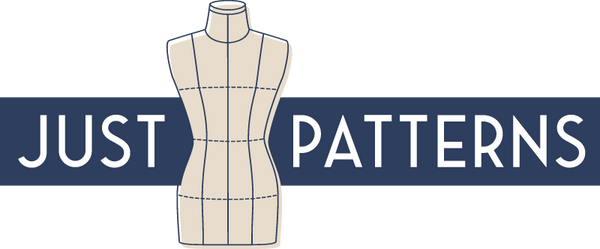Welcome back for the second part of my thoughts on our second year selling digital sewing patterns! You can read the first part with the income report if you haven’t already. Today’s post goes beyond the numbers, it looks at lessons learned and changes being made to implement them.
We currently have several channels to get feedback on our patterns, some are public and some are not. On the public side, I actively monitor reviews on Etsy, PatternReview and what people say on Instagram in posts that we are tagged in. On the private side, I get a lot of feedback from our Facebook pattern development group and I send a survey to all Etsy Customers 2 months after their purchase. I’m basing my lessons on all those sources.

LESSON 1 - OUR SIZE RANGE IS TOO LIMITED
This was a mistake we made from the very beginning. We focused on releasing 5 patterns in our first year and did not test outside the size range that we were used to. We became aware of the issue quite early in the project. In fact, as soon as the patterns were discussed on Pattern Review, but since we couldn’t do any pattern development in 2018, we could not update the range. Our initial size chart is based on Continental Europe, but in 2018, almost half of our customers were in North America.
The discussion on size inclusivity earlier this year on Instagram coincided with time off from my day job for me. It was the perfect push to prioritize working on the size range rather than releasing new patterns.. We completely regraded one of our best sellers, the Stephanie Skirt, we recruited new testers who were extremely helpful and it is now available in our shop! We will make a formal announcement in the coming days and share the pictures from our testers. We will be using our new size range for all upcoming patterns and progressively update our past ones.
LESSON 2 - STEP-BY-STEP INSTRUCTIONS ARE EXPECTED BY MOST SEWISTS
I truly believe that most sewists are more capable that what they give themselves credit for. I also think that you remember better what you learned on your own rather than following a recipe. But, when I approached resellers of patterns to diversify our channels in 2018, two of them where very interested by ended up refusing our patterns due to the lack of step-by-step instructions.
A few month ago, one of our customers mentioned in the survey that she had bought the Linda Wrap Dress but she had not started sewing it since it would require “to be in the right mindset to figure out how to do the steps without detailed instructions”. That sentence really stuck with me. As many of us are trying to fit sewing in the middle of all our other responsibilities, there isn’t always enough time to figure things out! I realize that the absence of detailed instructions was intimidating.
We decided to add step-by-step instructions at the same time when we extend the grading of our existing pattern.
LESSON 3 - OUR PRICES ARE/WERE MOST LIKELY TOO CHEAP
This is the most difficult lesson for me and the one I resisted the most. As soon as we launched in 2017, I started hearing that our price point was too low by several business owners of the community as well as customers. I initially hoped that the volume could offset the low prices, but I had not realized how much fees were being charged to digital products. In addition to payment processing fees (around 3% usually), Etsy charges a flat fee of 20cts per sale, and Paypal 30ct. On a 3$ product, this represents quite a lot.
In addition, sales increased organically but never took off in a way that could compensate the low prices. There could be several reasons for that. On the one hand, I think that we launched when the indie pattern market was already crowded and maybe even fatigued. It was harder to get the visibility and the combination with very specific styles, the absence of detailed instructions most likely pushed some potential customers away.
WHAT IT MEANS FOR JUST PATTERNS
Every indie pattern business is set up differently, depending on the skills of its founder(s) and I think it has implications on what is considered “costly”. Some designers come from a graphic design or a teaching background, which makes writing and illustrating instructions relatively quick and maybe even pleasurable. Those designers will tend to hire a patternmaker/grader. In the case of Just Patterns, the patternmaking/grading and sample sewing is what we really enjoy doing and can produce fast. I asked for some quote by professionals for the illustrations but it seems that it would amount to something around $800 per pattern, which not realistic with our current business model.
I have to decided to write and illustrate instructions myself but it takes me a long time, so I will be coordinating this with the re-release of the patterns with the extended sizing. This means that we will invest significantly more time in our existing and future patterns which drove the decision to increase our prices. The Stephanie Skirt is the first that got the full treatment. It is now available in the extended size range and with illustrated step-by-step instructions. Its price is now $10, although it’s on sale for limited time! If you purchased the previous version of the skirt, you will be receiving the new pattern for free.
I hope that you found the reflections shared here interesting and I cannot wait to hear your thoughts in the comments below!
